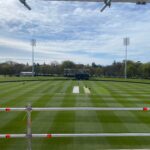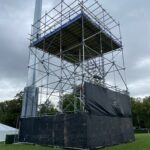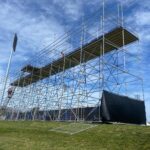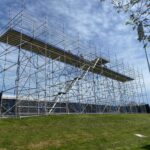Hagley Oval: Camera Towers
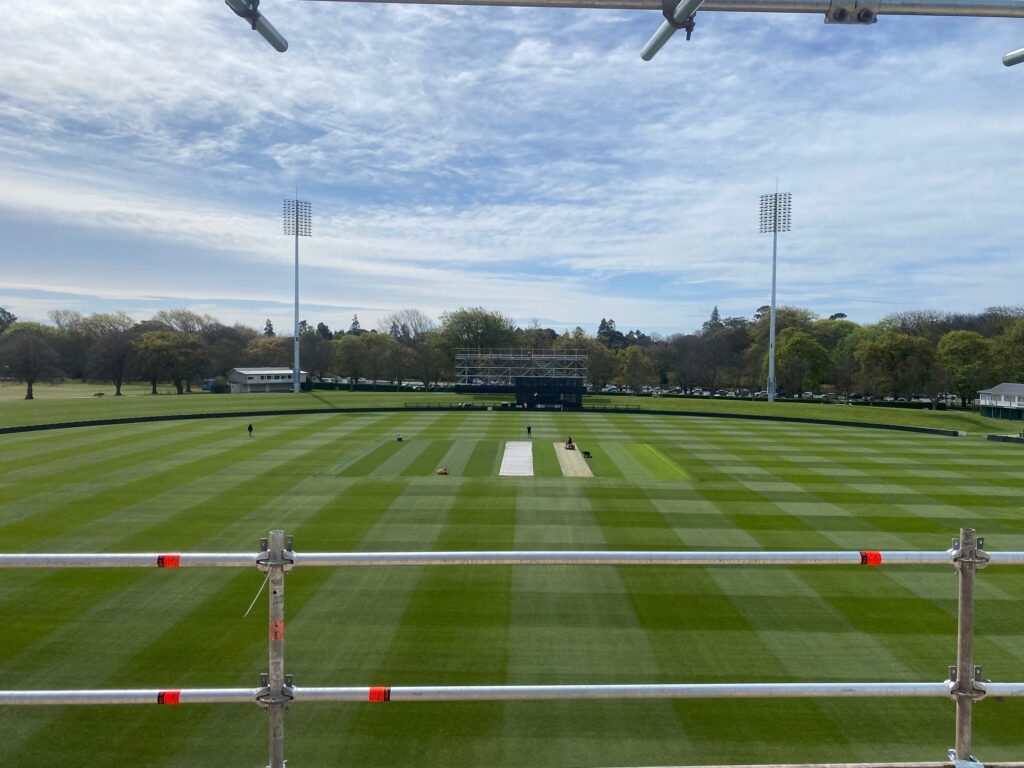
The client:
Known to cricket fans worldwide, the Hagley Oval is the home of cricket in Canterbury and has been since the area’s first settlers arrived. Located in Christchurch’s Hagley Park, the Oval boasts six permanent light towers, bringing day/night cricket to Christchurch. The next stage of development was to install camera towers. Although the Christchurch City Council manage the events held at the Hagley Oval, the design of the camera towers is dictated by the camera operators working for media companies.
The Challenges
- Stability – ensuring the scaffolding structure met the rigorous stability standards required for camera operation and spectator safety
- Time constraints – urgency imposed by the client necessitated swift completion of the scaffolding within a limited timeframe
- Ground protection – preventing damage to the ground surface, especially during wet conditions prevalent during dismantling
- Client apprehension – a reluctance to switch to a new scaffolding system, unfamiliar with Layher scaffolding
- Communication – assuring the client of Upright Scaffolding’s expertise and building trust in our capabilities
- Efficiency – optimising the placement of scaffolding equipment to reduce labour intensity during erection while ensuring precision
Ensuring minimal movement in the scaffold is crucial to enable the camera operator to swiftly manoeuvre the cameras for capturing optimal shots. Consider a scenario where a batsman strikes a six; the camera operator must rapidly track the ball’s trajectory through the air. Given the substantial weight of the cameras, any motion in the scaffold platform detrimentally affects the quality of the camera shots broadcasted worldwide.
The solution:
We reevaluated the initial scope of works provided by the camera operators, which called for a tube and coupler scaffold. Recognising the need for enhanced stability and functionality, we proposed a comprehensive solution that addressed various aspects of the project’s requirements.
We designed a customised wooden plank platform, opting for its reduced friction properties over traditional steel decks. This bespoke platform not only provided a smoother surface for camera positioning but also contributed to minimising unwanted vibrations, thereby optimising camera stability and image quality.
Installation of the necessary bracing was streamlined thanks to the inherent efficiency of the Layher system, further contributing to the project’s timely execution. The erection of two large camera towers atop the embankment was facilitated by our experienced team, supported by the provision of requisite producer statements (PS1 and PS4) by our skilled engineer.
As for the issue of scaffold ballast, we collaborated closely with the client to implement a more sustainable solution. Departing from the conventional use of water containers, which are cumbersome, space-consuming, and resource-intensive, we engaged a supplier to install ground anchors. This eco-friendly alternative not only minimised environmental impact but also offered long-term benefits, as the ground anchors are permanent fixtures capable of multiple uses.
The result:
Navigating within a stringent four-day timeframe to complete scaffold structures at both ends of Hagley Oval, we implemented a series of strategic measures to optimise efficiency and ensure timely project delivery. Leveraging the speed and versatility of the Layher scaffolding system, we successfully mitigated time pressure while maintaining quality standards.
On day one, we executed an efficient logistics plan by delivering 100% of the required gear to the site and utilising a crane to position equipment from trucks directly to the top of the embankment, adjacent to the tower erection sites. This approach not only saved significant time but also eliminated the need to manually transport gear up potentially wet and slippery grass slopes.
Efficient resource allocation continued throughout the project, with the use of cranes to lift bundles of planks onto the top working platform, further reducing labour intensity and expediting the scaffolding process. We suggested leaving scaffold structures erected for the entire cricket season, which optimised cost-efficiency for the client, reducing labour expenses over multiple games.
Strategic changes in scope, such as increasing putlog width, contributed to substantial efficiencies by minimising scaffold tube usage. Prioritising the installation of stair access enhanced safety and facilitated seamless access to higher scaffold lifts and movement of equipment.
Effective communication, facilitated through Microsoft Teams, ensured close to real-time coordination between on-site teams and office planners. This technological integration enabled proactive resource management, quality control of health and safety documentation, and compliance with regulatory requirements.
The client’s satisfaction was evident in their positive feedback, acknowledging our ability to consistently meet deadlines and effectively address the diverse needs of all stakeholders involved in the project.

WE CHECK OUT
SECTOR COMPLIANCE AT A GLANCE
Compliance and accreditation checks needn’t be a hassle. Download our Compliance Pre-Check form and view Upright’s company and crew-level accreditation at a glance.



